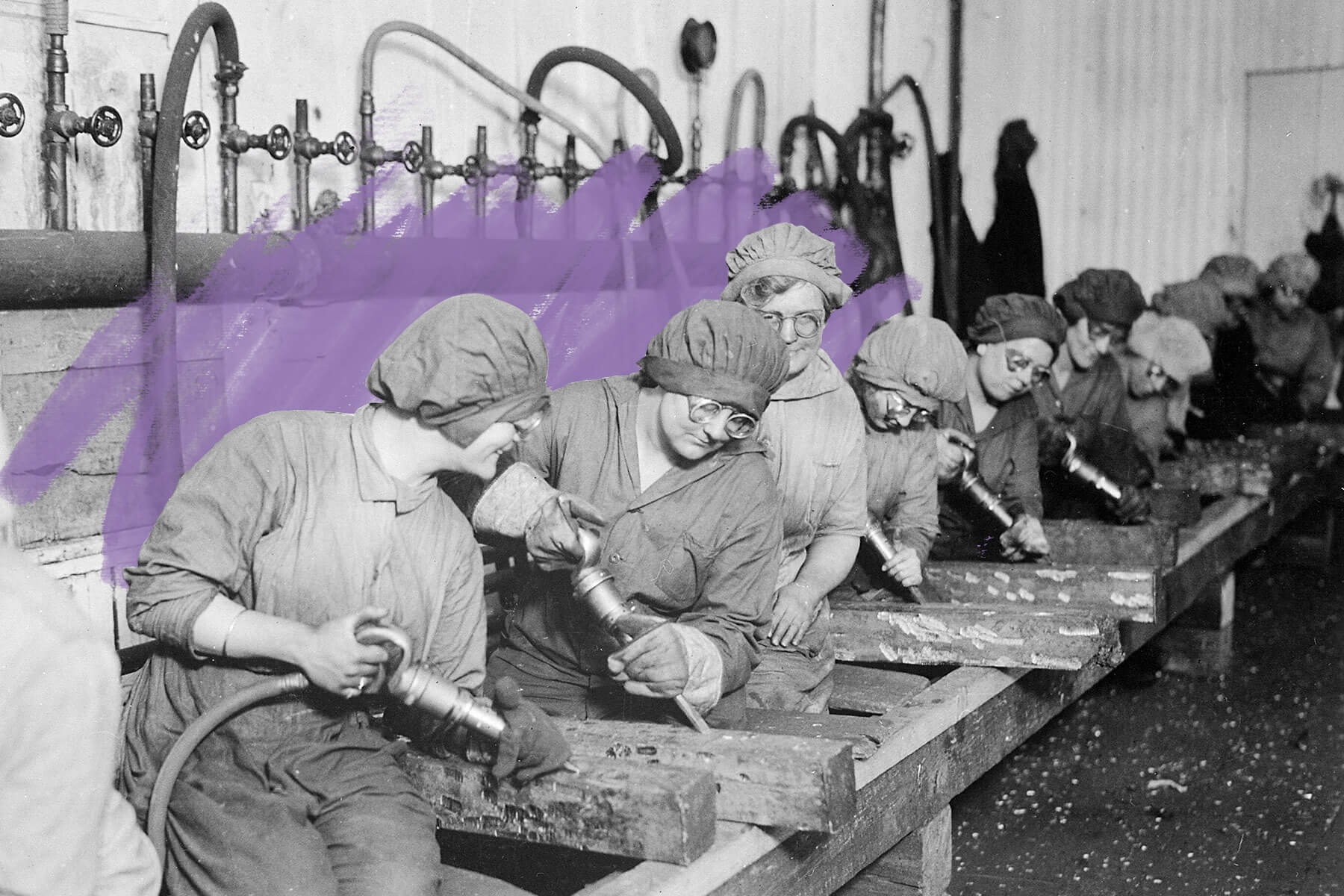World War I helped popularize the modern bra.
For nearly 400 years, women in Western Europe and North America were expected to wear corsets beneath their clothing — restrictive, binding bustiers that cinched at the waist and opened toward the chest to accentuate the natural curves of the body. This all changed around the First World War, when a shortage of metal, the dominant material in corsets, led to a redistribution of resources as well as a cultural shift. Steel went toward planes and tanks and other military equipment, and American women went to work in factories to contribute to the war effort. Hard labor, however, could not be performed in a corset — indeed almost nothing could be performed in a corset, barring sitting and standing. These women needed something breathable, loose, and functional.
Enter Caresse Crosby, a young debutant who, in lieu of wearing a corset, opted to sew together two handkerchiefs ahead of a social ball, debuting the first “modern bra” on the dance floor. She patented the first-ever “backless brassiere,” which she later sold to the Warner Brothers Corset Company. From there, the modern bra took off in a variety of styles and functionalities. In the postwar era, the bandeau bra — a cylindrical, cupless garment not unlike a modern bralette — was popular under slim-fitting 1920s dresses. Soon after, the cupped bra took shape with its infamous pointed cups and letter-based sizing. The variable styles allowed women the chance to express themselves and move their bodies freely, though the relief of taking off a bra at the end of the day is universal and timeless.















